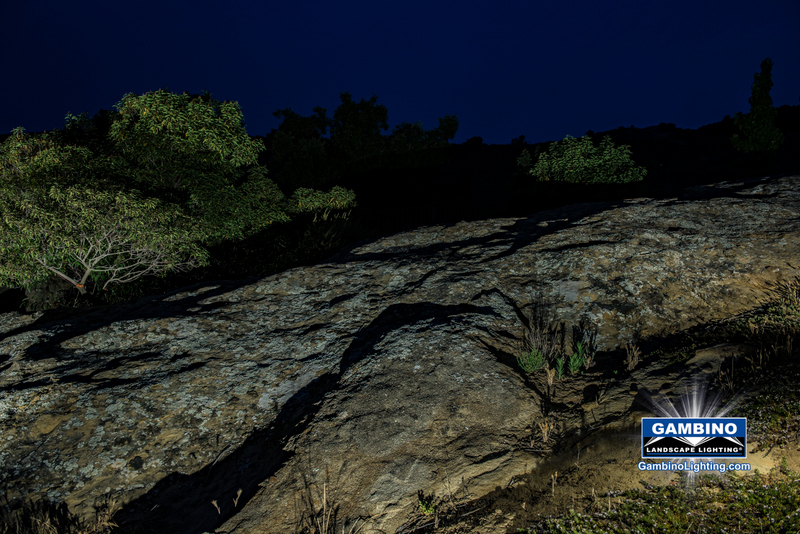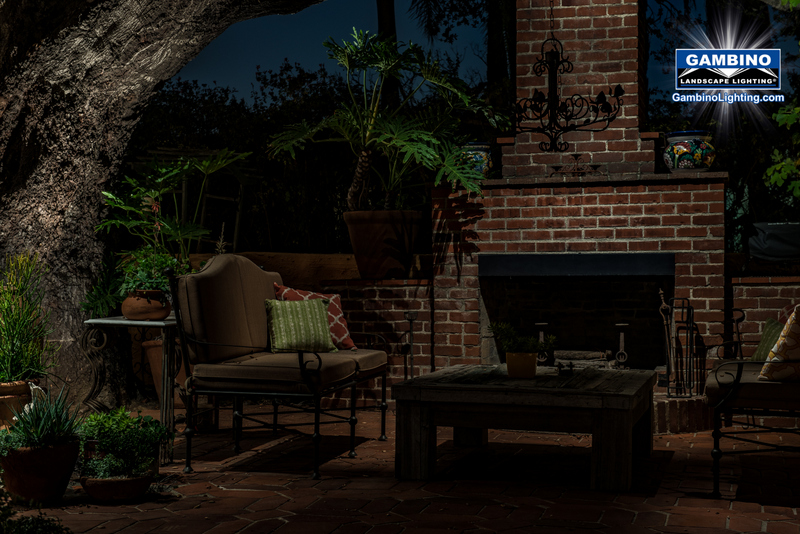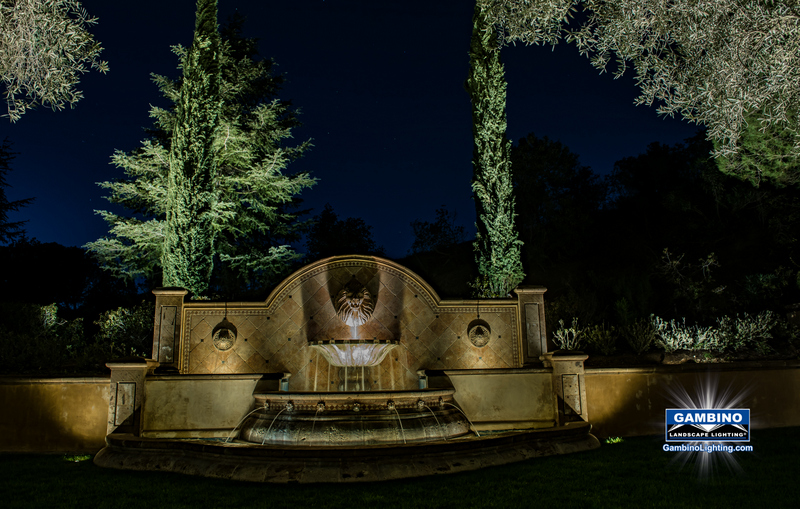01 Sep Garden lighting is really like “Painting with light”
By Mike Gambino
 Garden lighting has often been described as “painting with light in the garden after dark” and rightfully so.
Garden lighting has often been described as “painting with light in the garden after dark” and rightfully so.
Space, angles, color and unique touches–good garden lighting design is a combination of both art and science.
Garden lighting design is both a science and an art.
When designing a garden space, we are creatively working to arouse a particular feeling or emotion. This is the same process a painter uses. She starts with an idea or inspiration she’d like to convey. She develops this into a full concept and then paints that gorgeous piece we see hanging in the museum.
 Garden lighting design is similar.
Garden lighting design is similar.
Because garden lighting design follows the same principles as art, it’s important to keep in mind that there is no right or wrong. A space must be functional. It must serve its purpose. But fundamentally, what makes one space “beautiful” and another “ugly” is simply a matter of opinion. A space will look great to some and maybe only “so-so” to others.
It’s subjective.
However, that’s also the beauty of garden lighting design—it affords each person the ability to be unique. Because every space can be completely different, we’re allowed to be who we are and live how we want after sundown. Each design is as unique as our distinct personality.
Science-based Garden lighting Design
That said, it’s true that there are also very scientific aspects of garden lighting design. Certain elements are grounded in math, for instance. These can get extraordinarily technical. Voltage and amperage measurements, lumen brightness and light color balance can be very precise. If you’re not skilled at these basic concepts it can be difficult to achieve the look and feel you want in a garden space.
Now, I agree, there are rules in garden lighting design; but they should never be followed for their own sake. They’re merely the path we take to arrive at our end goal. They’re tools we use to create the outcome we’re looking for.
 An example of this is fixture placement. You don’t want the light sources in your space to be to be too close to their subjects because it has the tendency to look too “hot” and harsh. Placements too close also become a maintenance issue as they crowd plants and trees and do not allow them space to grow. Another example is scale and space planning—how to integrate lighting into a particular space. It’s important to consider the width and depth of the property to ensure the overall design of the garden space looks proportional. These are the foundational elements you have to consider when designing an outdoor ” room” at night the “science” of design.
An example of this is fixture placement. You don’t want the light sources in your space to be to be too close to their subjects because it has the tendency to look too “hot” and harsh. Placements too close also become a maintenance issue as they crowd plants and trees and do not allow them space to grow. Another example is scale and space planning—how to integrate lighting into a particular space. It’s important to consider the width and depth of the property to ensure the overall design of the garden space looks proportional. These are the foundational elements you have to consider when designing an outdoor ” room” at night the “science” of design.
Another example with lighting. Sometimes the colors in a garden are too “cool.” Simply changing the lamps (light bulbs) from cool color ones to warm white will completely change the way we perceive the amenities in the garden at night.
A Foundation of Science. The Finishing Touch of Fine Art.
 These are foundational elements. They’re objective. They’re scientific. You have to know them well to arrive at the outcome you’re seeking. However, outside of these, design is subjective—it’s art. And that’s important for us to remember.
These are foundational elements. They’re objective. They’re scientific. You have to know them well to arrive at the outcome you’re seeking. However, outside of these, design is subjective—it’s art. And that’s important for us to remember.
Because after all, who’s “right”? Rembrandt or Picasso? Monet or Da Vinci?
Design is beauty. Beauty is art. Art is opinion. And opinion is individual.
And that’s a wonderful thing because that allows us to express our own unique personality and individuality.
Here’s to your Garden lighting masterpiece!
 This landscape lighting blog is published by Mike Gambino of Gambino landscape lighting inc. all
This landscape lighting blog is published by Mike Gambino of Gambino landscape lighting inc. all  rights reserved. Mike is a professional landscape lighting system designer/ builder and has been designing, installing and maintaining landscape lighting systems for more than 27 years. Mike resides in the Los Angeles area with his wife and 2 sons. To visit his website go to www.Gambinolighting.com . To inquire about hiring Mike please click here .
rights reserved. Mike is a professional landscape lighting system designer/ builder and has been designing, installing and maintaining landscape lighting systems for more than 27 years. Mike resides in the Los Angeles area with his wife and 2 sons. To visit his website go to www.Gambinolighting.com . To inquire about hiring Mike please click here .
Blog articles may be published with permission on other websites without editing or removing links.



No Comments